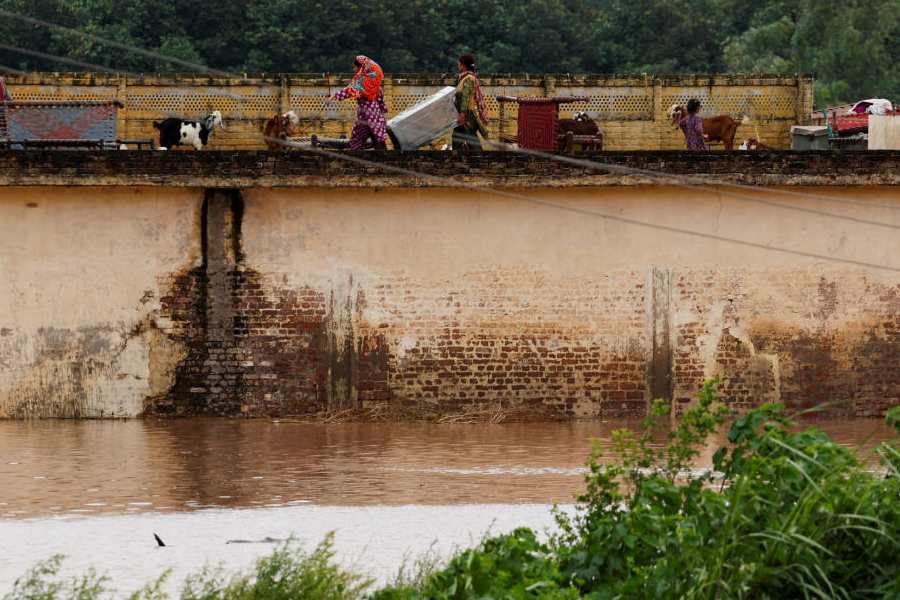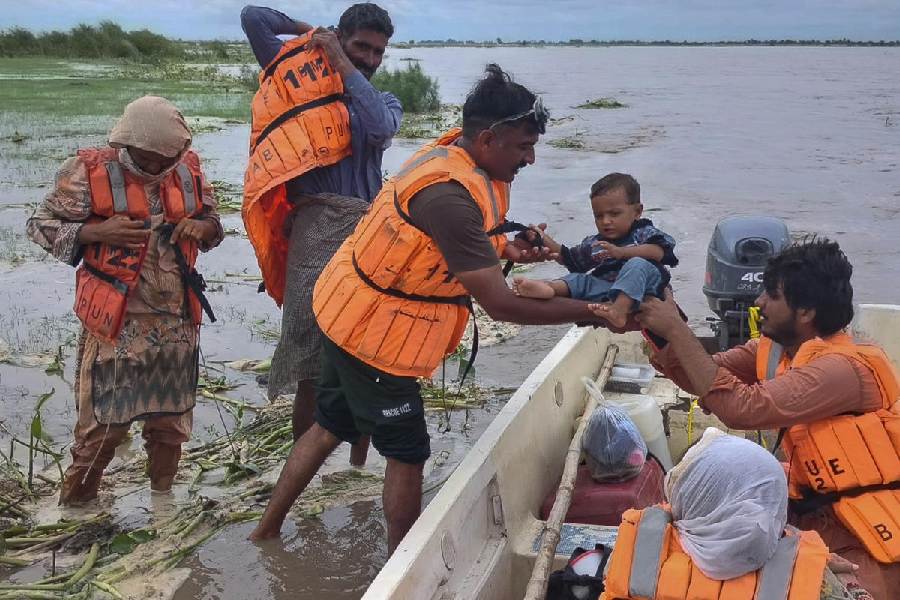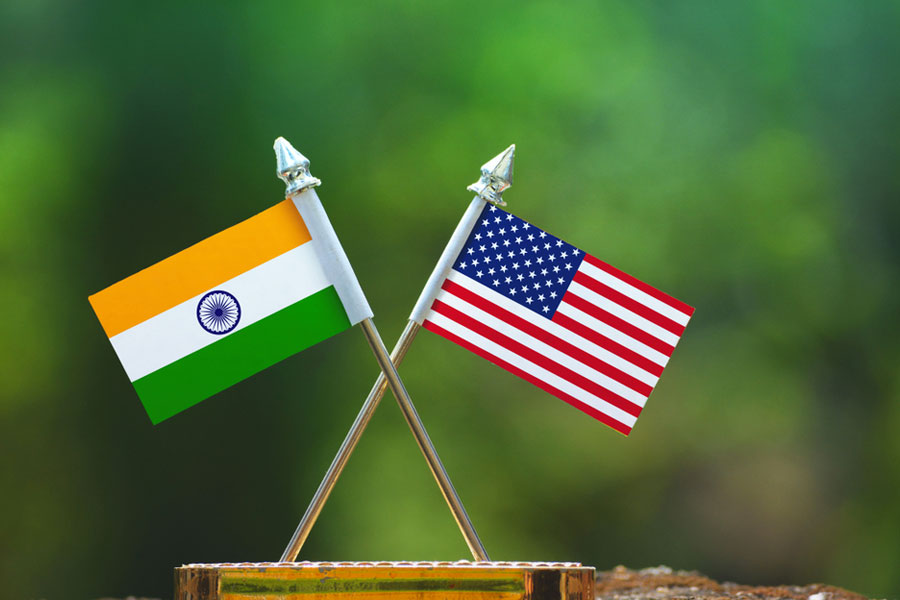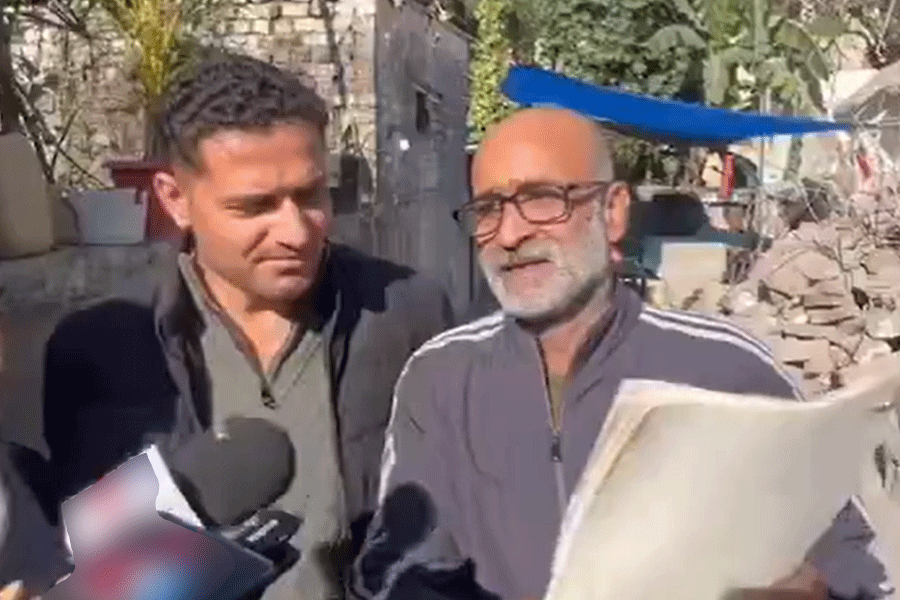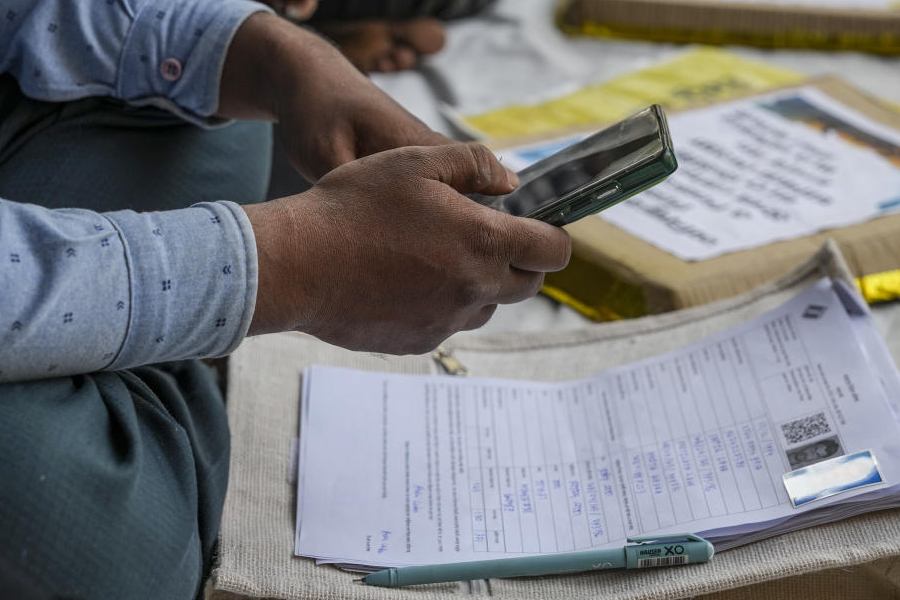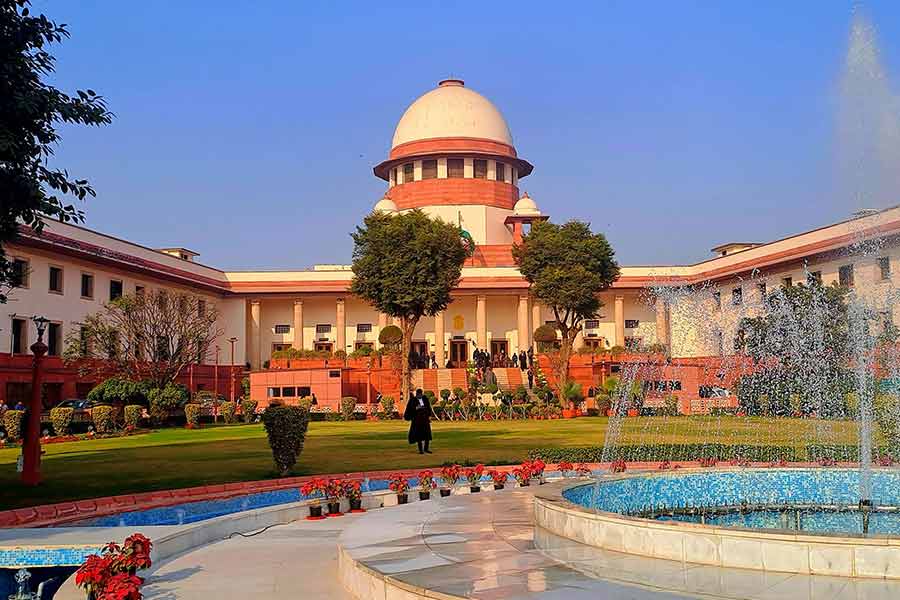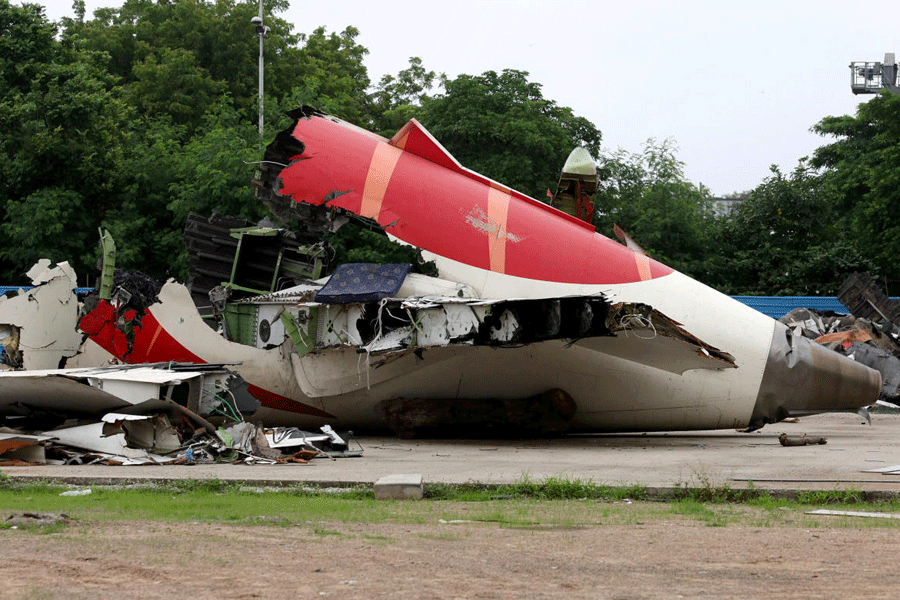Over 100 people, mostly staff members, were stranded after floodwaters from the Ravi River submerged the Kartarpur Corridor, including Gurdwara Darbar Sahib, in Narowal district of Pakistan's Punjab province.
Officials said on Wednesday that rescue efforts were underway.
"The entire Kartarpur Corridor complex, including Gurdwara Darbar Sahib, has been submerged by high floodwater," Saifullah Khokar, head of the Kartarpur Corridor Project Management Unit, told PTI.
Khokar added that those trapped, mostly project staff, were being rescued by boats and a helicopter. Images and videos circulating on social media showed the revered Sikh shrine surrounded by water.
The Kartarpur Corridor, opened in November 2019, links Gurdwara Darbar Sahib in Pakistan, where Sikhism’s founder Guru Nanak Dev lived and died, to Dera Baba Nanak in Gurdaspur district of Indian Punjab.
The 4 km-long stretch provides visa-free access to Indian pilgrims to visit the shrine.
India-Pakistan coordination
India on Wednesday opened all gates of major dams in Jammu and Kashmir after heavy rainfall and informed Pakistan of possible downstream flooding, an Indian government source said.
Pakistan confirmed it had received the alert and issued warnings for three rivers flowing in from India. Islamabad said India had already passed on two earlier flood warnings since Sunday.
A Pakistani disaster management official noted that India would release controlled volumes of water in coming days. Flooding has displaced more than 167,000 people in Pakistani Punjab, including nearly 40,000 who left voluntarily following warnings.
The overall death toll from flooding in Pakistan since late June has reached 802, with half of the fatalities recorded in August alone. Both India and Pakistan have been hit by heavy monsoon rains in recent weeks.
Rising river levels
According to Narowal Deputy Commissioner Hasan Raza, hundreds of residents have also been evacuated after India released water into the Ravi, causing the river to exceed its holding capacity.
The Ravi, which can hold 150,000 cusecs, was flowing at 155,000 cusecs at Kot Nain in Shakargarh tehsil, he said.
On Sunday, India communicated flood warnings to Pakistan through diplomatic channels on "humanitarian grounds."
Flood alerts are usually shared through the Indus Water Commission, but India had earlier announced it was putting the Indus Waters Treaty in "abeyance" following the April 22 Pahalgam terror attack.
Thousands of acres of farmland have been submerged, damaging rice crops and animal fodder, officials said. Heavy rainfall and overflow from drains in Auj, Bayan and Dek further worsened the situation, inundating villages and crop fields.
Authorities have now warned of a high flood in the Ravi at Shahdara on Wednesday night, as water levels continue to rise.
At Shahdara in Lahore, the river was flowing at 72,900 cusecs, putting low-lying areas such as Shahdara, Park View and Motorway-2 at risk.
Evacuations in Punjab
Prime Minister Shehbaz Sharif chaired an emergency meeting on Wednesday and directed authorities to strengthen early warning systems. The provincial government called in army troops for rescue and evacuation efforts.
Over 250,000 people have been shifted from flood-prone areas across Punjab to safer places, according to officials. Rescue operations have also been stepped up in Indian Punjab. Boats were deployed in Amritsar’s Ajnala area on Wednesday.
"Rescue teams have been sent and boats have been pressed into service," Amritsar (Rural) SSP Maninder Singh said. Deputy Commissioner Sakshi Sawhney visited the area to review the situation.
A swollen Ravi has also inundated villages near the India-Pakistan border in Pathankot. Deputy Commissioner Aditya Uppal urged residents not to panic and shared helpline numbers for support.
The administration has set up two relief camps at Satsang Beas Centre in Pathankot and Gosaipur. Several teams of the National Disaster Response Force (NDRF) were deployed in Sujanpur, Atepur and Baheri areas.
Rivers in spate
Continuous rains across Himachal Pradesh and Jammu and Kashmir have raised the water levels of the Sutlej, Beas and Ravi rivers, along with seasonal rivulets, flooding farmlands and villages in Punjab.
The release of water from Pong, Bhakra and Ranjit Sagar dams added to the flooding in districts such as Pathankot, Gurdaspur, Fazilka, Kapurthala, Tarn Taran, Ferozepur and Hoshiarpur.
The Ravi, Ujh and Jalalian rivers were also in spate after the release of water from the Ranjit Sagar dam. Narot Jaimal Singh and Bamial blocks were among the worst-hit, with large tracts of land submerged.
Indian water resources minister Barinder Kumar Goyal said on Tuesday that rainfall in plains and mountains had filled all dams to capacity.
Protecting lives, minimising damage and delivering relief supplies were among the government’s immediate priorities, he added. Flood control rooms have been set up, including one at the Circuit House in Jalandhar, to coordinate relief measures.

